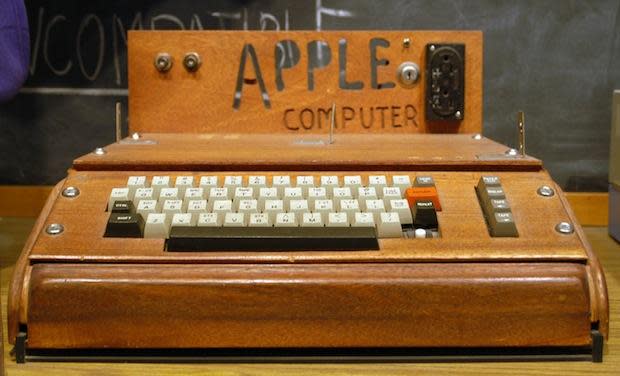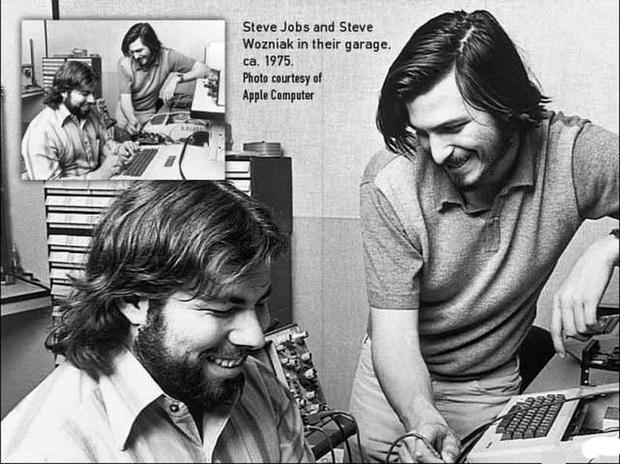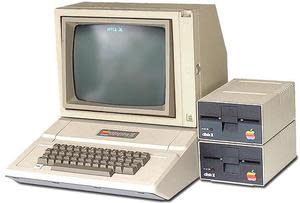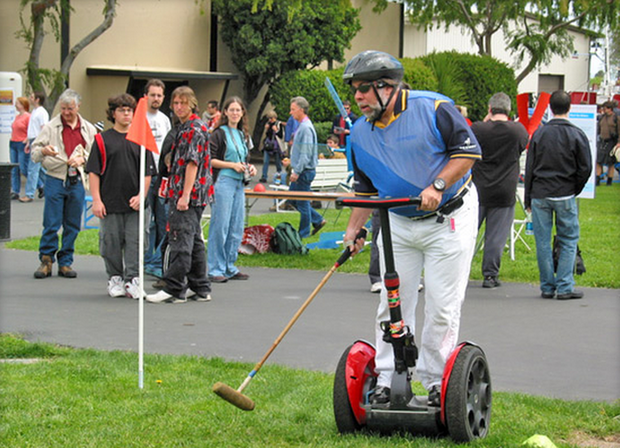Wozniak talks: Self-driving cars, Apple Watch, and how AI will benefit humanity
This article, Wozniak talks: Self-driving cars, Apple Watch, and how AI will benefit humanity, originally appeared on TechRepublic.com.

Steve Wozniak talks to John Dixon, Freescale's director of corporate marketing, at the Freescale Technology Forum 2015 in Austin, Texas.
Image: Freescale
Steve Wozniak foresees a world far in the future controlled by artificial intelligence. This used to scare him, but after reasoning his way through it in a uniquely Woz way, he's decided it will benefit humanity in the long run.
"They're going to be smarter than us and if they're smarter than us then they'll realize they need us," Wozniak told the audience of 2,500 people today at The Moody Theater in Austin, Texas, as part of the Freescale Technology Forum 2015, which runs June 22-25.
Wozniak said he used to lie awake and worry about the concept. But he finally realized, "It's actually going to turn out really good for humans. And it will be hundreds of years down the stream before they'd even have the ability. They'll be so smart by then that they'll know they have to keep nature, and humans are part of nature. So I got over my fear that we'd be replaced by computers. They're going to help us. We're at least the gods originally."
Before artificial intelligence could take over the world, everything would need to be controlled by computers, as is slowly happening via the Internet of Things (IoT), he pointed out. But this doesn't meant that IoT is a bad thing, by any means.
"I want the Internet of Things. It does things for me. I don't have to think. The Internet of Things, if it ever did want to take over the world, would send a message to the computers of today saying, 'build us the Internet of Things, that's what we need.' It makes things nice for humans, so we want this. If it turned on us, it would surprise us. But we want to be the family pet and be taken care of all the time," he said.
"I got this idea a few years ago and so I started feeding my dog filet steak and chicken every night because 'do unto others,'" he quipped.
But how does Wozniak truly utilize IoT? For fun. "Right now I'm still at the stage where I can change it from my phone. I only do it to prank my life. 'Let's see, it's 4 a.m. in the morning in California, I'll honk the horn in the garage.'" He said that makes his wife wonder if the FedEx guy has shown up early on a Sunday morning. Or he uses it to turn the lights on and off via his phone and harass his wife.
Hewlett-Packard: The early years
Wozniak talked quite a bit about how he started innovating when he was an engineer at Hewlett-Packard. What originally triggered his desire to build a computer was to have one of his own to work on at Hewlett-Packard.
"I wanted my own computer so I wouldn't have to share a computer with 48 other HP engineers. So I wanted it badly, and the only way I could do it was to build it myself. But I also wanted a useful computer that you could type programs into," he said.
"All through high school and college days if I had computer problems, I'd go to sleep thinking about it hard and wake up thinking of solutions that were good or bad." Steve Wozniak
At the time, he said, most computers were big, expensive boxes with a front panel and lights. "I realized I could never afford input/output, but I owned a television and I'd learned how to use an analog television in high school electronics. I lucked out because I'd already built some projects like that to get on the ARPANET. Six universities had computers on the ARPANET."
So, he rigged up his TV at home with a keyboard. "Just because it was free. I had no money," he said. He laughed as he recalled that back then, "a useful computer had to have 4K of RAM."
His best ideas, such as adding color to a monitor, came because he was tired and his mind was wandering and he thought about how there was color in Atari's arcade games. He had already worked with Steve Jobs on a small project and written "Breakout" for Atari. "I look back and think, 'God almighty, if my mind hadn't wandered ...'" The resulting color monitor first appeared on the Apple II, which was the machine that started the personal computer movement, as noted previously on TechRepublic.
Letting your mind wander is one of the best ways to innovate, Wozniak said. "All through high school and college days if I had computer problems, I'd go to sleep thinking about it hard and wake up thinking of solutions that were good or bad."
Oftentimes he'd forget his dreams, so, he said, "I started writing them down. I discovered sometimes the solutions you come up with dreaming are good. Sometimes they're something you discarded before. The mind is always thinking all the time."
"I was such a nerd I didn't have a girlfriend or a wife so I had lots of free time," he added.
He was able to spend a lot of time innovating because, he said, "Hewlett-Packard values in those days were unbelievable. We were making the tools that engineers need. Hewlett-Packard had a policy that you could have the parts out of the storeroom for something of your own design if your supervisor approved," he said.
After work, he'd head home and heat up a TV dinner, then, he said, "I'd go back to the office and work on my own projects for fun."
When Wozniak developed his first computer, he said, "I offered it to Hewlett-Packard first, and they turned me down five times for the personal computer."
He said it was good that they did, because, if they had bought it, "they would have built a boring product for engineers. They wouldn't have had color and animation and all that fun. Apple II made a huge change there."
He said creating the computer was important to him because of the social change it could accomplish. He knew it was going to improve communication. "The thought you could type a message into a computer and people would read it an hour later... man, I was so turned on by this thought."

The Apple I was the first computer Steve Wozniak built.
Image: ZDNet
He was showing off his new computer at the Homebrew Computer Club when his friend Jobs showed up. "I said, 'you have to see this.' He saw the crowd around me as I demonstrated it. That's when he said, 'we should start a computer company and sell your PC board. We'll build it for $20 and sell it for $40. It wasn't even a whole computer." That would become the Apple I.
Starting without an exit plan
Wozniak talked about how Apple began. "Steve and I were really young. We were in our early 20s. We had no business courses. We had no money. We had a mentor [Mike Markkula] who owned a third of Apple stock. He said to start a technology company and told us what my role would be, what Steve's role would be."

Steve Wozniak and Steve Jobs circa 1975
Image: Apple
They didn't have an exit plan. "We never thought, 'oh, companies get acquired and all this stuff. We just thought it's going to be a company you'd have forever. Nowadays entrepreneurs plan on selling out in three years. They don't think, 'I want this desperately myself for the right passionate reasons.'"
"When we started Apple, our investors, particularly Mike Markkula, thought this would be a billon dollar company in five years. I thought, 'however you've been successful in life, you talk bigger numbers. I thought, 'you make $100,000, that's four times more than my current salary!'"
Wozniak and Jobs first thought the Apple II would be used to help people keep family recipes on hand and balance their checkbook. Luckily, they were wrong. If that was all it had been used for, the company would have failed, Wozniak said.

The Apple II computer launched a tech revolution.
Image: ZDNet
Soon, "the first killer app came along" and it helped small business owners set up a basic accounting program. "Sales shot up ten times. We realized there was a bigger market in the small business direction based on that one killer app."
"I'll tell you it wasn't my idea from the start to do it for riches. I even turned down the big money at the start. I went inside my own head and said I wanted to work at Hewlett-Packard and design. Our investor said I had to leave Hewlett-Packard. I said, 'I've done all this ... while moonlighting.' He said, 'no, tell us your decision on Tuesday,'" Wozniak said.
"I said, 'no, I want to be an engineer for life at Hewlett-Packard.' Finally I turned around. A friend of mine convinced me you can start a company and stay an engineer and be an engineer at Apple. I was like, 'oh wow.' I thought they'd kick me out if I ran the company, but as an engineer they'd never kick me out."
There were five other people that Wozniak considered founders, in addition to himself and Jobs and Makkula. He said that there was such huge wealth at the top and that other people from the early days deserved more. "I gave $20 million of my own stock to the five other people I considered founders." He didn't stop there. "I went to engineers and marketing people at Apple and I sold them some pre-IPO stock at a price they could make a house out of when we went public. But I wouldn't force that thinking on other people. Maybe I was afraid of confrontation."
What about that Apple Watch?
John Dixon, Freescale's director of corporate marketing, pointed out that Wozniak wasn't wearing an Apple Watch.
Wozniak explained that since he's an Apple employee, he gets a discount on an Apple Watch. "Officially I'm an employee. I'm the only person who has been on the payroll ever since the beginning. Somehow, even when I had a plane crash I never got off of it," he said with a shrug.

Image: TechRepublic
"Tim Cook said every employee got 50% off Apple watches. It was too much trouble to figure it out ..." he said. But now he has bought one. He said he preferred a $1,100 model, but opted for one that was $400 less expensive.
About the watch, he said, "You don't buy a watch. You buy a band ... Apple has 20 different levels of watches and the only difference is the band. 'If you want to spend $600 more you get this band,'" he said, mimicking a sales pitch.
Despite his own riches, Wozniak is very cost conscious and looks for value in his purchases. So he quipped, "The only time you really get your value is if you buy the gold one. $10,000 and then if you buy a better band it's $17,000. It's like a gold Rolex. It doesn't matter if the watch works."
As for how much he likes the watch? That's yet to be determined. "They haven't shipped it yet," he said.
Apple's future with self-driving cars
Wozniak is also interested in self-driving cars. "That's artificial intelligence. How do I get around obstacles and detours and noticing all those things. That's quite a task and that shows us how far we've gotten through simulating intelligence."
"There will be fewer accidents if you don't have human drivers. I think laws will be passed that you can't have human drivers on some roads. Maybe we'll start giving up cars like we gave up CDs. Just order an Uber car to come pick me up."
"I think Apple will have a share in that. I think they should. A company like Apple has to look at markets that are huge for growth. And the auto market is huge. That makes sense to me," Wozniak said, adding that he doesn't know anything specific about Apple's plans. "I never ask my higher-up or lower-down friends at Apple. I respect the need to know about products that are under development."
Broadband and late-night downloads
Switching gears, Wozniak talked about his longtime home in Los Gatos, Calif. "My home is in a little notch of Silicon Valley and it doesn't get broadband," he said.
"I ordered a movie the other night and had to wait 7 hours for it to download. My wife and I have a trick. There's a navigation program called Navigon. Each iPhone takes 24 hours to download the updated maps every three months. Last time, I drove down to the Apple store in town and parked there all night long. I parked there from midnight to 6 in the morning, downloading. It's true," he insisted.
He said it would be easier to live somewhere with broadband, but he said, "I love my home. Netflix is in our city ... it's where the Pet Rock was invented." He said the video game industry also began in Los Gatos.
Tips from Woz: How to innovate
There's no one better than Wozniak, the modern day Thomas Edison, to share wisdom on how to invent something worthwhile.
Clear your head out if you want to innovate, he said. "How do you clear your head out? Start with a clean slate. Like, 'here's the world we have, what can I do to improve it?'"
He said there are two types of engineers -- the type who studies books and solves problems, and the type who invents and comes up with new ideas. Large companies often have problems encouraging innovation because they have too many procedures and rules.
When asked which companies he thinks are the most innovative now, he said, "I look for real small groups that came from scratch to nothing. Of course everyone is trying to be the next Facebook replacement or Uber with a twist."
When he innovates, "I get an idea for a goal. I know I will be able to figure out what I don't know to get to that goal. You need those ideas to occur to those kind of people. If you're in a large company, everything comes through the bureaucracy and the chain of command. It's hard. I think companies should set aside little divisions called the innovation division and keep it secret and spin it out to different cities if you have to."
"How do you clear your head out? Start with a clean slate. Like, 'here's the world we have, what can I do to improve it?'" Steve Wozniak
"In the Silicon Valley everybody wants their own campus and their own place. At Hewlett-Packard, people were independent thinkers. I was the one Apple executive against having a whole campus in one place so you can control everything in one city block."
When he was a young engineer, he said, "The engineer that I was spent 20 hours a day just thinking and working ... and trying to come up with solutions that no other engineer would."
Then he had kids, and he said he left some of the work to other engineers. Age plays a role in innovation.
"You have more physical energy and more mental energy the younger you are, down to a point, say, 23. Then you cannot be the same person, designer, inventor, whatever ..."
"A lot of things I designed were just for fun, and then Steve Jobs would come into town and figure out a way to make money for us. The Apple II was like that," he said.
One of the keys to innovating is to think differently, much like the longtime Apple slogan, "Think different."
When Wozniak worked at Hewlett-Packard, there was a slump in the industry when most companies were laying off employees. His employer decided to keep everyone on board, but cut salaries by 10% and give employees every other Friday off. "A lot of people didn't like that. But you got every other Friday off. It was great for a young engineer. That's a liberal approach. I agreed to it. Friday's off? Man, that gave me a three-day weekend and I could go up to Portland, Oregon where Steve Jobs was in college and visit my friend."
"I try to think of things. I'm still that way. I don't want to do the same things everyone else is doing," he said. "Innovation should be for its own sake. Making something cool that you want to have. And not making something you think other people want and that you can use to make money. I never thought that way."
When he is innovating, he tries to come up with clever tricks. Back when he created his first computer, he said, "I started to think, 'is there anything I can do to save a part? How can I do it? I'd go through chip panels and find something that took fewer parts. Less money is the way to think. Create something that does the job a little better."
"Motivation is more important than content," he said. When you have something to show off, that's a motivating factor. I found the same thing applies to education. If you get the key, 'I want to learn,' you're gonna."
The Segway, augmented reality and VR
Wozniak said he's drawn to new things. One of his favorite inventions is the Segway two-wheeled electric vehicle, which debuted in 2001. He quickly bought one once they were on the market, and he said he still frequently uses it to head down into town, comparing it to riding a bicycle instead of a car and without the problems of dealing with a seatbelt or fuel. But of course he had to tinker with his Segway as soon as it arrived.

Steve Wozniak plays Segway Polo.
Image: Daniel Terdiman/CNET
"The keys had codes that told the Segway how fast it was allowed to go. I went online and ... started ordering parts and built a little PC board that programs your key with your own speed codes. Because I'm so safety conscious," he said with a laugh. He said he tells people, "I've taken my Segway 108 MPH without a helmet." Then he adds, "In the back of my car." He said he and his wife carry their Segways with them on the back of their car, which used to be a Prius and they've now swapped out for a Tesla.
On another new invention, he also touched upon augmented reality and what's preventing the masses from accepting it.
"It's not real here and abundant and not real cost efficient yet. It takes a while to grow a market. Jobs thought Macintosh would take over.... It took three years to build a Macintosh market that would replace our Apple II market."
As for augmented reality, he said, "I love Google Glass for being such a small processor with a small user interface. I couldn't justify it for what it did for the cost."
And then in the virtual reality realm, he said that Oculus Rift and other VR gear, "will really change the world. You get into a different world than what you're used to and it will change your world. Those are the things we appreciate the most about technology -- when we have an emotional feeling left over."
The acceptance of augmented reality and virtual reality gear will be slowed down by cost and equipment, he said.
Android vs. Apple
One audience member asked Wozniak, "Would you use Android if you weren't involved with Apple?"
His response? "I think there are a lot of reasons I would still be with Apple. I think you're talking more than anything smartphones. And the iPhone set the pattern. I admire companies that set the direction. The Apple products ... are to make them work for people who aren't experts. I favor the ones who think about people who have no technical skills. 'The rest of us' we used to call it in the Macintosh days."
Because he likes to try new tech, he said he tested Android phones and they "finally became pretty useable" around the time of the Samsung Galaxy S3 and Galaxy Note 1. He said he particularly liked that you could say "smile" and the phone would automatically take a photo.
He also liked the large screens. "Those big screens stood out for years. My Apple friends would poo-poo it. I don't know why Steve Jobs said 'throw a nuclear war against Google for putting Android on the market.' You can't compete with thermonuclear war. We didn't compete. We left the big screen market wide open to Samsung and others for years. We gave away a big chunk of that market for years."
He said he's pleased that Apple finally offers smartphones with both large and small screens.
Educating the future inventors
Wozniak has strong opinions about education, and students spending time focused on subjects other than the one they're passionate about.
If a kid is into microprocessors, for instance, he said, "It's too bad you have to learn about all the other subjects in school and microprocessors aren't even in school. Some day maybe all the kids will get to be like third-year college students and pursue their main interest and ignore the others. In my third year of college I only took graduate level courses in hardware and software design. I'd read every page and answer every question and I'd be halfway through the book by the day class started."
"In school you can't go off and do thinking for yourself," he said.
Wozniak mentioned the FIRST Robotics Competition, which the Freescale Foundation supports as part of an initiative to promote studies in science, technology, engineering, and math among underprivileged and underrepresented students. Wozniak has acted as a judge for several of the competitions.
"FIRST Robotics. It's a way high school students can discover what technology is about. Build some mechanics. Motors, power supply, microprocessors and software. All the disciplines together and some of them discover 'this is what I want to do for life,'" he said.
And he wouldn't be Woz with jumping on to a completely separate subject, as his mind wandered. That said, his best piece of random advice? "If your mother is in the hospital and you get a call, what do you do? You back up your computer and get to the hospital."

